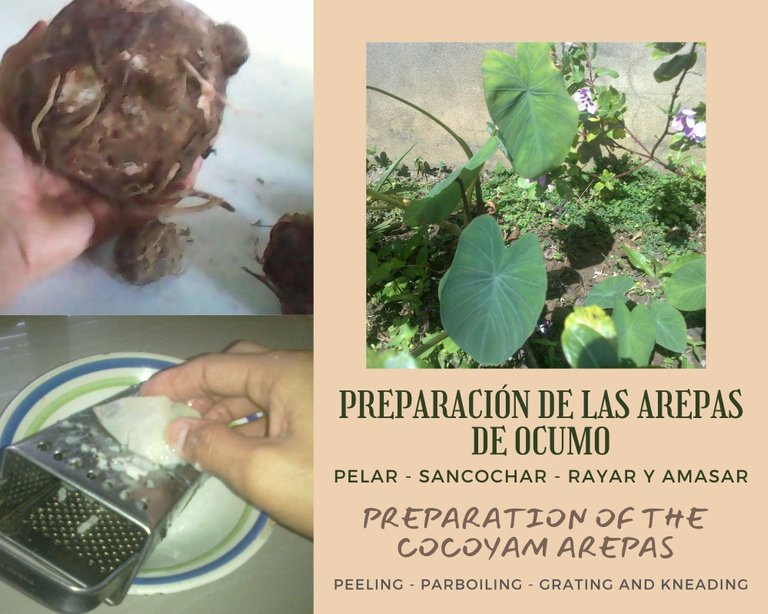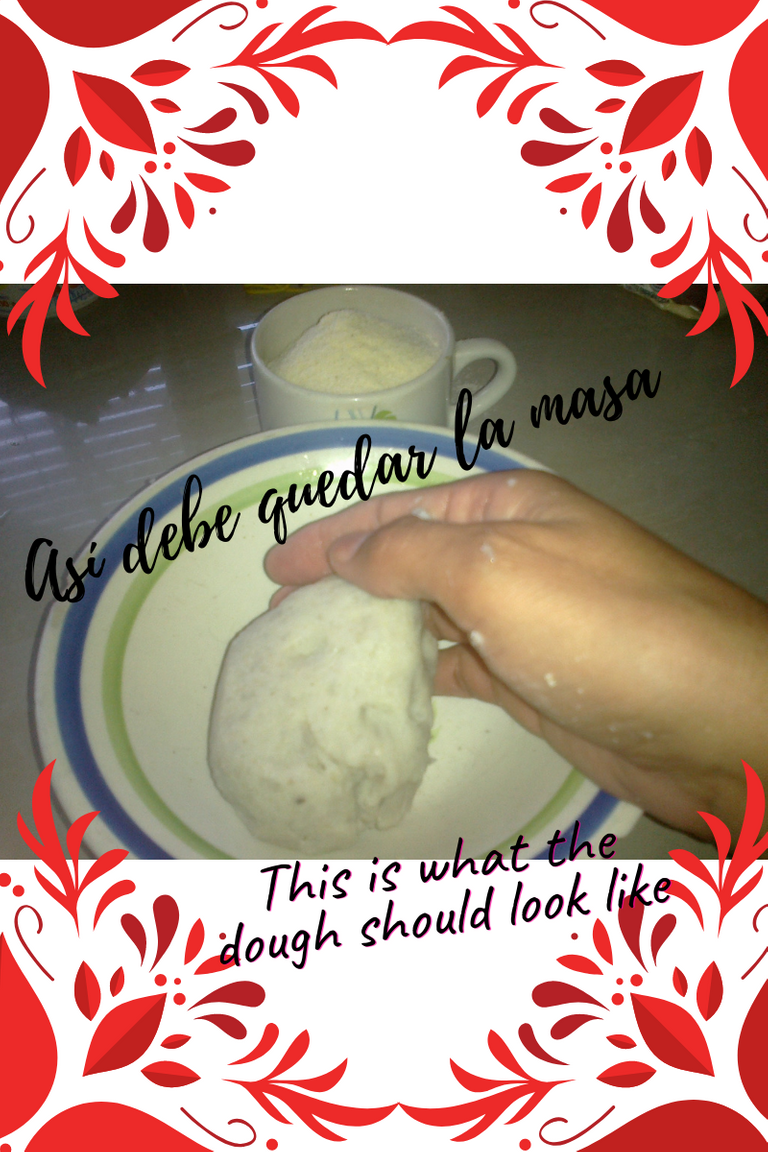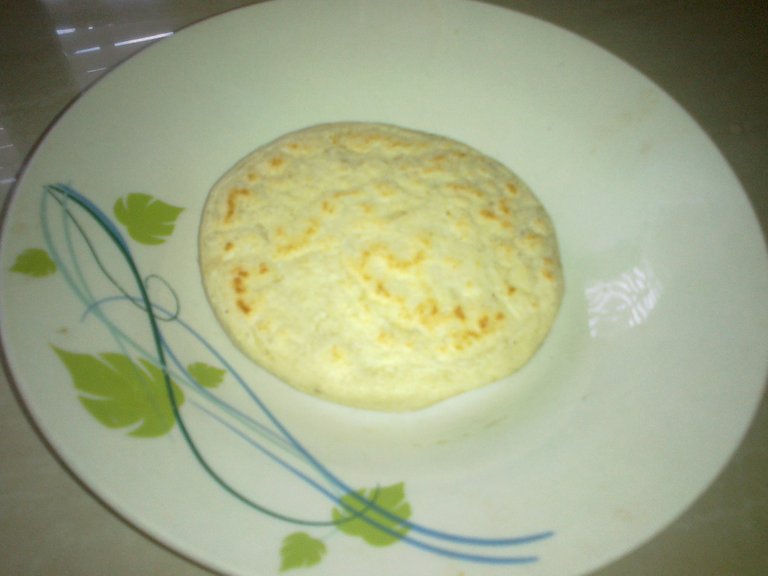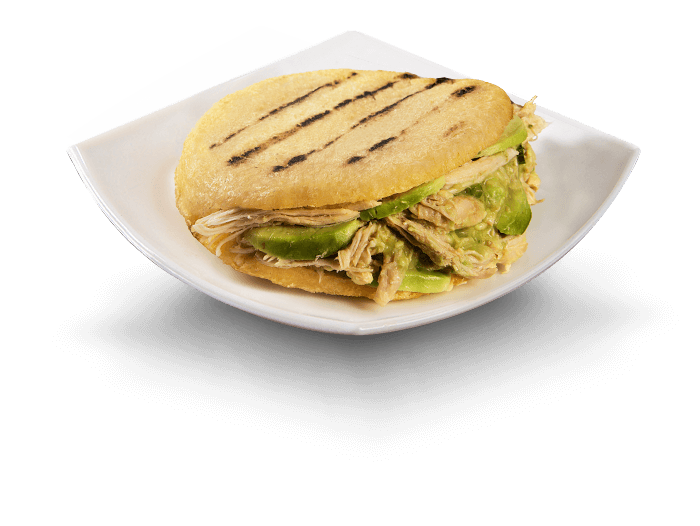Hoy les traigo esta deliciosa versión de la tradicional arepa Venezolana, sustituyendo la harina de maíz por una masa hecha a base de ocumo sancochado. Esta es una receta muy económica y nutritiva, lo mejor es que este tubérculo lo podemos cosechar en casa.
Today I bring you this delicious version of the traditional Venezuelan arepa, substituting corn flour for dough made with parboiled cocoyam. This is a very economical and nutritious recipe; the best thing is that this tuber can be harvested at home.

El ocumo es ampliamente conocido como una fuente importante de carbohidratos para el organismo, rico en fósforo, hierro, calcio, potasio, manganeso, vitaminas A, E, C, B1 y B6. Estos nutrientes y otros antioxidantes encontrados en el ocumo ayudan a fortalecer el sistema inmunitario y a la eliminación de radicales libres del organismo, lo cual lo convierten en uno de los alimentos que no deben faltar en tu dieta básica.
The ocumo or cocoyam is widely known as an important source of carbohydrates for the body, rich in phosphorus, iron, calcium, potassium, manganese, vitamins A, E, C, B1 and B6. These nutrients and other antioxidants found in cocoyam help strengthen the immune system and the elimination of free radicals from the body, which makes it one of the foods that should not be missing in your basic diet.
Es una planta herbácea con hojas en forma de corazón tal como se observa en la foto. En Venezuela consumimos solo el tubérculo pero he leído que en otros países como Guatemala consumen los tallos y las hojas.
It’s an herbaceous plant with heart-shaped leaves as shown in the photo. In Venezuela we consume only the tuber but I have read that in other countries like Guatemala they consume the stems and leaves.
Su nombre científico es xanthosoma sagittifolium de la familia de las aráceas, ampliamente cultivado en América del Sur y América central, en Venezuela se conoce con el nombre de ocumo blanco o criollo pero también hay una variedad llamada ocumo chino que es de origen asiático. En otros países es conocido con diversos nombres tales como la malanga en Cuba, quequisque en México, tiquisque en Costa Rica, entre otros. Es de resaltar que no todas las aráceas son comestibles, así que hay que verificar el nombre de esta variedad comestible en su país. Para la preparación que les muestro a continuación he usado la especie de ocumo blanco producido en el jardín de mi casa.
Its scientific name is xanthosoma sagittifolium of the Araceae family, widely cultivated in South and Central America, in Venezuela it is known by the name of white or creole cocoyam but there is also a variety called Chinese cocoyam which is of Asian origin. In other countries it is known by various names such as malanga in Cuba, quequisque in Mexico, tiquisque in Costa Rica, among others. It should be noted that not all Araceae are edible, so you should check the name of this edible variety in your country. For the preparation I show you below I have used the white cocoyam species produced in my home garden.
Ingredientes:
- Ocumo (la cantidad que desees preparar)
- Harina de maíz, 5 cucharadas aproximadamente
- Aceite, 3 cucharadas
- Agua para hervir
- Sal al gusto
Ingredients:
- Cocoyam (the amount you wish to prepare)
- Corn flour, 5 tablespoons approximately
- Oil, 03 tablespoons
- Water for boiling
- Salt to taste
Preparación:
Es sumamente fácil la preparación; primero se le quita la concha al ocumo, se pica en trozos y se lleva al fuego en una olla con suficiente agua agregando sal al gusto. Una vez que se ablande se retira del fuego y se deja enfriar. Posteriormente se raya o se tritura para hacer un puré, se amasa colocando un poquito de aceite y harina de maíz para darle consistencia a la masa. Luego se hacen las arepas y se colocan en el budare o plancha a fuego lento. Y a disfrutar!
Preparation:
It is very easy to prepare; first remove the shell from the cocoyam, chop it into pieces and put it on the fire in a pot with enough water adding salt to taste. Once it softens, remove it from the fire and let it cool down. Then it is grated or mashed to make a puree, it is kneaded with a little oil and corn flour to give consistency to the dough. Then the arepas are made and placed in the budare or griddle over low heat. And enjoy!

A la hora de darle forma a las arepas puedes colocarte aceite en las manos para que quede más compacta la masa.
When shaping the arepas you can put oil on your hands to make the dough more compact.

Arepa de Ocumo / Cocoyam arepa
Las medidas que se indican arriba son una cantidad aproximada ya que al momento de prepararlo es que se observa la cantidad necesaria de harina y aceite de acuerdo a la cantidad de ocumo sancochado.
The measures indicated above are an approximate amount, since at the moment of preparing it, the necessary amount of flour and oil is observed according to the amount of parboiled cocoyam.
Puedes acompañarlo con el relleno que prefieras para que disfrutes de esta delicia en tu desayuno o cena, puede ser con queso, jamón, aguacate, huevos revueltos, etc.
You can serve it with the filling of your choice to enjoy this delicacy for breakfast or dinner; it can be with cheese, ham, avocado, scrambled eggs, etc.

Fuente de la imagen: https://pngimage.net/arepas-png-7/
Postre económico / Economic dessert
Hay una variante de esta receta que puede ser una opción para tus meriendas y postres, es una alternativa similar a los típicos buñuelos de yuca pero hechos de ocumo y sin freír. Se hacen pequeñas arepitas pero solo con ocumo sin agregarle harina de maíz, se cocinan en un sartén o budare y se cubren de melao de caña o miel. Son una delicia y como no se fríen te ahorras el aceite y son mucho más saludables.
There is a variant of this recipe that can be an option for your snacks and desserts, it is an alternative similar to the typical yucca fritters but made of cocoyam and without frying. Small arepitas are made but only with cocoyam without adding corn flour, they are cooked in a frying pan or budare and covered with molasses or honey. They are delicious and since they are not fried you save oil and they are much healthier.
Ambas recetas son una opción muy económica, nutritiva y deliciosa, anímate a probarlas.
Both recipes are a very economical, nutritious and delicious option, try them.
El contenido es propio, las imágenes fueron capturadas por mi celular y editadas en Canva a excepción de arepas_png_7 que es de pngimage.
The content is my own; the images were captured by my cell phone and edited in Canva except arepas_png_7 which is from pngimage.
Translated with www.DeepL.com/Translator (free version)

¡Felicidades! Esta publicación obtuvo upvote y fue compartido por @la-colmena, un proyecto de Curación Manual para la comunidad hispana de Hive que cuenta con el respaldo de @curie.
Si te gusta el trabajo que hacemos, te invitamos a darle tu voto a este comentario y a votar como testigo por Curie.
Si quieres saber más sobre nuestro proyecto, acompáñanos en Discord: La Colmena.
Congratulations @alborhada! You have completed the following achievement on the Hive blockchain and have been rewarded with new badge(s):
Your next target is to reach 1250 upvotes.
You can view your badges on your board and compare yourself to others in the Ranking
If you no longer want to receive notifications, reply to this comment with the word
STOPCheck out the last post from @hivebuzz: